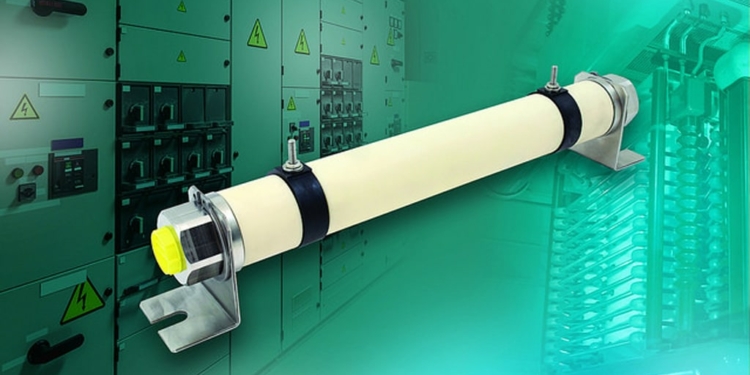Source: Vishay news
MALVERN, Pa. — June 18, 2018 — Vishay Intertechnology, Inc. (NYSE: VSH) today introduced a new series of direct water cooled wirewound resistors that offers ultra high power dissipation to 9000 W with almost no external radiation. Available in six compact sizes ranging from 38 mm by 178 mm to 38 mm by 410 mm, Vishay MCB DCRF series devices are designed to save space and increase reliability over standard wirewound resistors.
The resistors released today handle ten times the power of natural cooled devices in the same size, and two times the power of indirect water cooled devices. By replacing multiple components with one resistor, the DCRF series allows designers to lower costs, simplify layouts, and reduce the size of their end products. The devices’ modular structure enables a multi-resistive element option.
Optimized as load, filter, snubber, and discharge resistors in large drives, HVDC, and battery management systems for industrial applications, the resistive elements of DCRF series devices are in direct contact with water and insulated by ceramic tubes, eliminating the need for a heatsink. With almost no or limited external radiation, the resistors increase reliability by limiting the surface temperature, while a safe failure mode prevents leakage in the event of a water flow shutdown. The devices can handle an overload of two times nominal power for 60 s without damage.
The DCRF series offers low inductance (< 500 nH for model DCRF 38 x178 with resistance of 4.7 W) and provides a resistance range from 0.56 W to 27 W, with tolerances down to ± 5 %. The devices feature power ratings from 1500 W to 9000 W with a water inlet temperature of 65 °C and 8.33 l/min flow rate (deionized water with conductivity < 2 µS/cm). RoHS-compliant and lead (Pb)-free, the resistors offer a typical temperature coefficient of 100 ppm/°C and operate over a temperature range of -55 °C to +120 °C.
Samples and production quantities of the DRCF series are available now for the 38 mm by 178 mm size with resistance of 1.6 W and 3.2 W. Lead times are 15 weeks for larger orders.
































